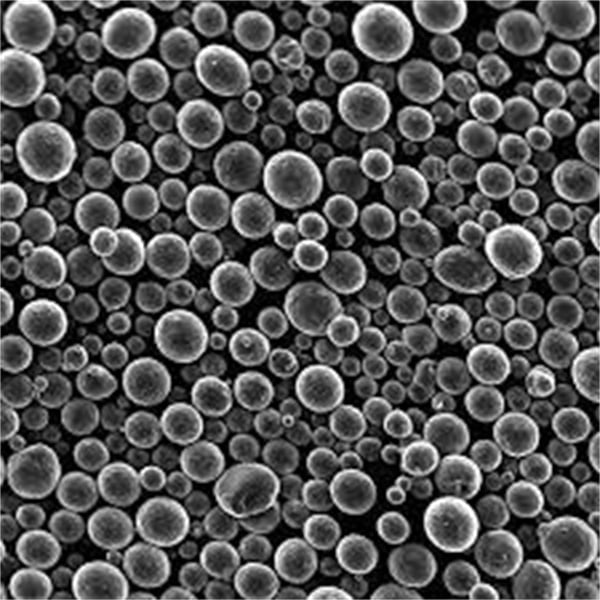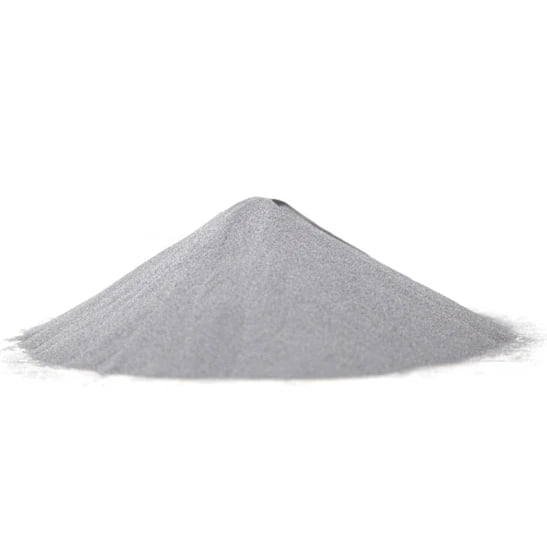Transformace SLM v letectví a kosmonautice
Obsah
Letecký průmysl byl vždy průkopníkem v posouvání hranic designu a technologií. Představte si svět, ve kterém jsou letadla lehčí, pevnější a úspornější. Tento sen se stává skutečností díky selektivnímu laserovému tavení (SLM), revoluční techniku 3D tisku, která v této oblasti vyvolává vlny. SLM mění způsob výroby leteckých komponentů a otevírá dveře inovativním konstrukcím a optimalizaci výkonu. Jak přesně se ale SLM prosazuje ve světě letadel, raket a dalších technologií? Pojďme se ponořit hlouběji a prozkoumat konkrétní aplikace SLM v leteckém průmyslu.

Kovové prášky pro SLM v leteckém průmyslu
Srdcem SLM je kouzlo kovových prášků. Tyto jemné kovové částice se pečlivě vrství a spojují pomocí výkonného laseru, čímž se na požádání vytvářejí složité 3D struktury. Konkrétní použitý kovový prášek hraje zásadní roli při určování vlastností a výkonu výsledné součásti. Zde je bližší pohled na některé klíčové kovové prášky používané v SLM pro letecké aplikace:
Kovové prášky pro SLM v leteckém průmyslu
| Kovový prášek | Složení | Vlastnosti | Charakteristika | Aplikace v letectví a kosmonautice |
|---|---|---|---|---|
| Slitiny titanu (Ti-6Al-4V, Ti-6Al-4V ELI) | Titan (Ti), hliník (Al), vanad (V) | Vysoký poměr pevnosti a hmotnosti, vynikající odolnost proti korozi, biokompatibilní | Částice prášku jsou sférické pro optimální tok a laserové tavení. | Lopatky turbíny, součásti podvozku, konstrukční součásti draku, |
| Superslitiny na bázi niklu (Inconel 625, Inconel 718) | Nikl (Ni), chrom (Cr), kobalt (Co), molybden (Mo) a další prvky. | Pevnost při vysokých teplotách, odolnost proti oxidaci | Náročnější na zpracování ve srovnání se slitinami titanu | Disky turbíny, obložení spalovacích motorů, součásti přídavného spalování |
| Slitiny hliníku (AlSi10Mg, Scalmalloy) | Hliník (Al), Křemík (Si), Hořčík (Mg) | Lehká konstrukce, dobrá pevnost, svařitelnost | Nabízí vysokou tepelnou vodivost ve srovnání s jinými slitinami. | Výměníky tepla, součásti křídla, součásti trupu letadla |
| Kobalt-chrom (CoCr) | Kobalt (Co), Chrom (Cr) | Vysoká odolnost proti opotřebení, biokompatibilní | Často se používá ve zdravotnictví, stále více se prosazuje v letectví a kosmonautice pro specifické opotřebitelné díly. | Ložiska, ozubená kola, součásti podvozku |
| Nerezová ocel (316L, 17-4 PH) | Železo (Fe), chrom (Cr), nikl (Ni), molybden (Mo) | Odolnost proti korozi, dobrá pevnost | Relativně cenově dostupný ve srovnání s jinými kovovými prášky | součásti kapalinových systémů, konstrukční součásti vyžadující dobrou odolnost proti korozi |
| Slitiny mědi (CuNi) | Měď (Cu), nikl (Ni) | Vysoká tepelná vodivost, dobrá elektrická vodivost | Používá se pro aplikace vyžadující účinný přenos tepla | Chladiče, přípojnice pro elektrické systémy |
| tantal (Ta) | tantal (Ta) | Vysoký bod tání, vynikající odolnost proti korozi | Relativně drahý kovový prášek | Vložky tyglíků pro vysokoteplotní aplikace, tepelné štíty |
| molybden (Mo) | molybden (Mo) | Vysoký bod tání, dobrá tepelná vodivost | Používá se v kombinaci s jinými kovy v superslitinách | Vysokoteplotní komponenty v raketových motorech |
| Wolfram (W) | Wolfram (W) | Velmi vysoký bod tání, vynikající odolnost proti opotřebení | Obtížně zpracovatelné kvůli vysokému bodu tání | trysky pro raketové motory, tepelné štíty pro návratové prostředky |
| Inconel vyráběný aditivním způsobem (AM) | Nikl (Ni), chrom (Cr), kobalt (Co), molybden (Mo) a další prvky. | Vlastnosti na míru prostřednictvím procesu AM | Umožňuje vytvářet jedinečné mikrostruktury se specifickými vlastnostmi. | Vysoce výkonné lopatky turbíny s optimalizovanými chladicími kanály |
Jak vidíte, výběr kovových prášků pro SLM v letectví a kosmonautice je široký a pečlivě vybraný na základě požadavků konkrétní aplikace. Od robustní pevnosti titanových slitin pro lopatky turbín až po lehkou účinnost hliníku pro součásti draku letadla - SLM umožňuje vytvářet díly s výjimečnými vlastnostmi, kterých dříve nebylo možné dosáhnout tradičními výrobními metodami.
Aplikace z SLM v oblasti letectví a kosmonautiky
Vliv SLM v letectví a kosmonautice zdaleka nespočívá jen v použitých materiálech. Tato technologie přináší revoluci ve způsobu navrhování a výroby leteckých komponentů, což vede k nové éře inovací. Zde jsou některé z klíčových aplikací SLM v leteckém průmyslu:
Aplikace SLM v letectví a kosmonautice
| aplikace | Výhody | Příklady |
|---|---|---|
| Lopatky turbíny | Komplexní vnitřní chladicí kanály pro lepší účinnost, nižší hmotnost, možnost vytvářet složité geometrie lopatek pro lepší výkon. | Vysokotlaké turbínové lopatky, nízkotlaké turbínové lopatky, blisky (integrované turbínové lopatky a disky) |
| Součásti podvozku | Nižší hmotnost pro lepší účinnost paliva, volnost konstrukce pro složité mřížové struktury pro lepší tlumení nárazů. | Držáky podvozku, vzpěry, konstrukční součásti |
| Konstrukční součásti draku | Optimalizace topologie pro snížení hmotnosti, možnost výroby složitých tvarů, které jsou tradičními metodami obtížné. | Žebra, podélníky, podélníky (konstrukční prvky) |
| Spalovací vložky | Konformní chladicí kanály pro lepší tepelný management, možnost vytváření složitých povrchových prvků pro lepší míchání paliva se vzduchem. | Vyzdívky spalovacího prostoru pro zvýšení účinnosti a snížení emisí |
| Výměníky tepla | Lehká konstrukce s velkou plochou pro účinný přenos tepla | Výměníky tepla vzduch-vzduch, chladiče oleje |
| Satelitní komponenty | Snížení hmotnosti pro zvýšení nosnosti, možnost výroby složitých struktur pro specifické funkce. | Držáky, antény, konstrukční prvky |
| Součásti raketových motorů | Materiály odolné vůči vysokým teplotám pro extrémní prostředí, možnost vytvoření složitých chladicích kanálů pro řízení tepla. | Trysky, spalovací komory, tahové komory |
Výhody využití SLM v těchto aplikacích jsou četné. Například schopnost vytvářet složité vnitřní chladicí kanály v lopatkách turbín umožňuje účinnější řízení tepla, což vede ke zvýšení výkonu motoru a palivové účinnosti. Podobně SLM umožňuje navrhovat a vyrábět lehké součásti pro draky letadel a podvozky, což přímo přispívá ke snížení spotřeby paliva a prodloužení doletu letadel. Kromě toho SLM umožňuje inženýrům vytvářet složité geometrie, které dříve nebylo možné vytvářet tradičními výrobními technikami, což otevírá nové možnosti optimalizace konstrukce a zvyšování výkonu.
Výzvy a úvahy o SLM v oblasti letectví a kosmonautiky
Přestože SLM nabízí obrovský potenciál pro letecký průmysl, stále existují výzvy, které je třeba překonat. Zde je několik klíčových úvah o využití SLM v leteckém průmyslu:
- Náklady na stroje a prášky: Stroje SLM jsou v současné době drahé a kovové prášky určené speciálně pro letecké aplikace mohou být drahé.
- Řízení procesu a kvalifikace: SLM je komplexní proces, který vyžaduje přísnou kontrolu parametrů, aby byla zajištěna konzistentní a spolehlivá kvalita dílů. Kvalifikace procesu SLM pro letecké součásti vyžaduje přísné testovací a certifikační postupy.
- Drsnost povrchu: Součástky vyráběné metodou SLM mohou mít ve srovnání s tradičně vyráběnými součástkami drsnější povrch. V závislosti na aplikaci může být nutné použít techniky následného zpracování, jako je obrábění nebo leštění.
- Omezení velikosti dílů: Současné stroje SLM mají omezené rozměry dílů, které mohou vyrábět. Výroba větších leteckých součástí může vyžadovat segmentaci a sestavení více dílů vytištěných pomocí SLM.
Navzdory těmto problémům jsou potenciální výhody SLM nepopiratelné. S tím, jak technologie dozrává a snižují se výrobní náklady, je SLM připravena stát se hlavní výrobní metodou v leteckém průmyslu. Výzkumné a vývojové úsilí neustále zlepšuje možnosti strojů, kvalitu prášku a řízení procesů, což připravuje půdu pro širší přijetí této technologie. SLM v nadcházejících letech.

FAQ
Otázka: Jaké jsou výhody použití SLM pro letecké komponenty?
Odpověď: SLM nabízí několik výhod, včetně:
- Lehké díly: SLM umožňuje vytvářet lehčí součásti ve srovnání s tradičními výrobními metodami, což vede ke zvýšení palivové účinnosti a prodloužení doletu letadel.
- Svoboda designu: SLM umožňuje navrhovat a vyrábět složité geometrie, které dříve nebyly možné pomocí tradičních technik, a otevírá nové možnosti optimalizace výkonu.
- Vlastnosti materiálu: Součásti vyrobené metodou SLM mohou být vyrobeny z vysoce výkonných materiálů s výjimečnými vlastnostmi, jako je vysoký poměr pevnosti a hmotnosti a odolnost vůči vysokým teplotám.
- Snížení množství odpadu: SLM je ve srovnání s tradičními metodami efektivnější proces, při kterém vzniká méně materiálového odpadu.
Otázka: Jaká jsou omezení použití SLM pro letecké komponenty?
O: Mezi omezení SLM v leteckém průmyslu patří:
- Náklady na stroj a prášek: Stroje SLM a kovové prášky mohou být drahé, což ovlivňuje výrobní náklady.
- Řízení procesu a kvalifikace: SLM vyžaduje přísnou kontrolu parametrů a přísné kvalifikační postupy pro letecké aplikace.
- Drsnost povrchu: V závislosti na aplikaci mohou díly SLM vyžadovat následné zpracování pro dosažení hladšího povrchu.
- Omezení velikosti dílů: Současné stroje SLM mají omezené rozměry dílů, které mohou vyrábět.
Otázka: Jaké pokroky se v budoucnu očekávají v oblasti SLM pro aplikace v letectví a kosmonautice?
Odpověď: Budoucnost SLM v letectví a kosmonautice je jasná a očekává se několik pokroků:
- Snížení nákladů na stroje a prášek: Očekává se, že s rozvojem technologie se sníží výrobní náklady na stroje SLM i na kovové prášky, čímž se SLM stane dostupnější pro širší použití.
- Větší stavební objemy: Vývoj větších strojů SLM se zvýšeným objemem výroby umožní výrobu větších leteckých součástí, čímž se odstraní nutnost segmentace a montáže.
- Multi-materiálová SLM: Pokrok v technologii SLM by mohl umožnit tisk dílů z více materiálů v rámci jednoho sestavení, čímž by vznikly součásti s odstupňovanými vlastnostmi pro optimální výkon.
- Monitorování a řízení procesů in-situ: Monitorování a kontrola procesu SLM v reálném čase zajistí konzistentní kvalitu dílů a sníží riziko vzniku vad.
- Automatizace a integrace: Větší automatizace a integrace SLM s ostatními výrobními procesy zefektivní výrobní postupy a zvýší efektivitu.
Otázka: Je SLM budoucností letecké výroby?
Odpověď: Ačkoli SLM pravděpodobně nenahradí všechny tradiční výrobní metody v leteckém průmyslu, nepochybně v něm způsobuje revoluci. Schopnost SLM vytvářet lehké, vysoce výkonné součásti se složitým designem ji činí ideální pro širokou škálu aplikací v letectví a kosmonautice. Vzhledem k tomu, že se tato technologie dále vyvíjí a překonává svá omezení, je SLM připravena stát se dominantní silou při utváření budoucnosti letecké výroby.
Závěr
Selektivní laserové tavení (SLM) mění způsob navrhování a výroby letadel. Tato inovativní technologie 3D tisku nabízí jedinečnou kombinaci svobody designu, vlastností materiálů a možností snížení hmotnosti a posouvá hranice možností v leteckém průmyslu. Od lehčích letadel s nižší spotřebou paliva až po rakety schopné dosáhnout nových výšek - SLM hraje zásadní roli při utváření budoucnosti létání. S tím, jak tato technologie dozrává a překonává své výzvy, je transformační síla SLM v letectví a kosmonautice neomezená.
Sdílet na
MET3DP Technology Co., LTD je předním poskytovatelem řešení aditivní výroby se sídlem v Qingdao v Číně. Naše společnost se specializuje na zařízení pro 3D tisk a vysoce výkonné kovové prášky pro průmyslové aplikace.
Dotaz k získání nejlepší ceny a přizpůsobeného řešení pro vaše podnikání!
Související články

Vysoce výkonné segmenty lopatek trysek: Revoluce v účinnosti turbín díky 3D tisku z kovu
Přečtěte si více "O Met3DP
Nedávná aktualizace
Náš produkt
KONTAKTUJTE NÁS
Nějaké otázky? Pošlete nám zprávu hned teď! Po obdržení vaší zprávy obsloužíme vaši žádost s celým týmem.

Kovové prášky pro 3D tisk a aditivní výrobu
SPOLEČNOST
PRODUKT
kontaktní informace
- Město Qingdao, Shandong, Čína
- [email protected]
- [email protected]
- +86 19116340731
















